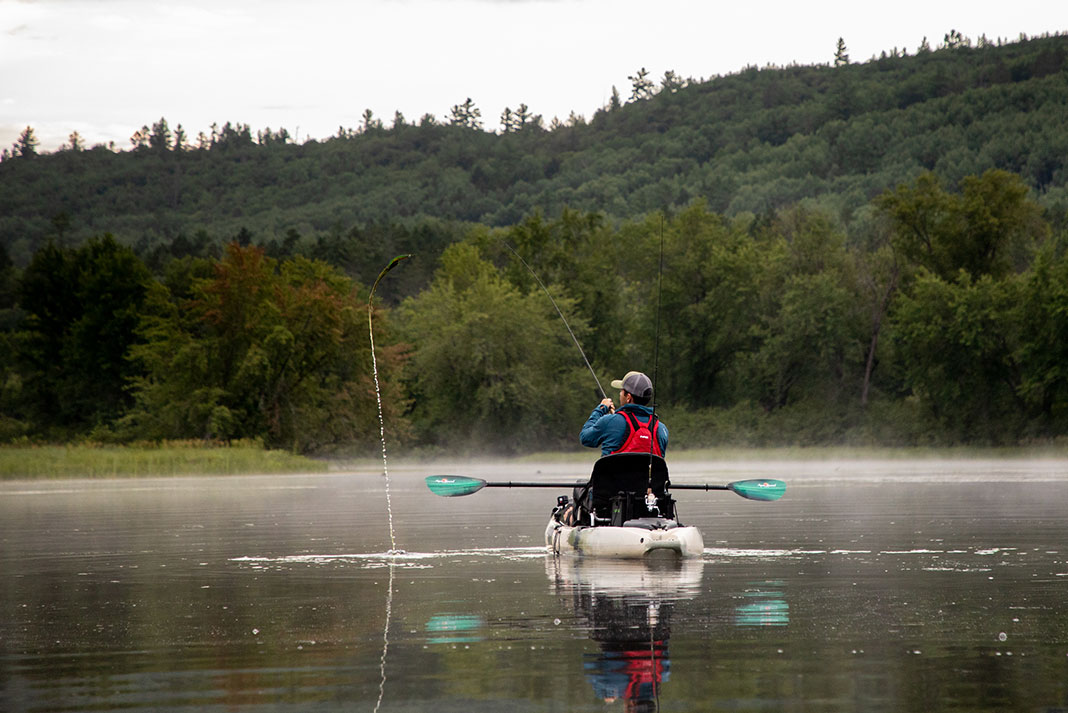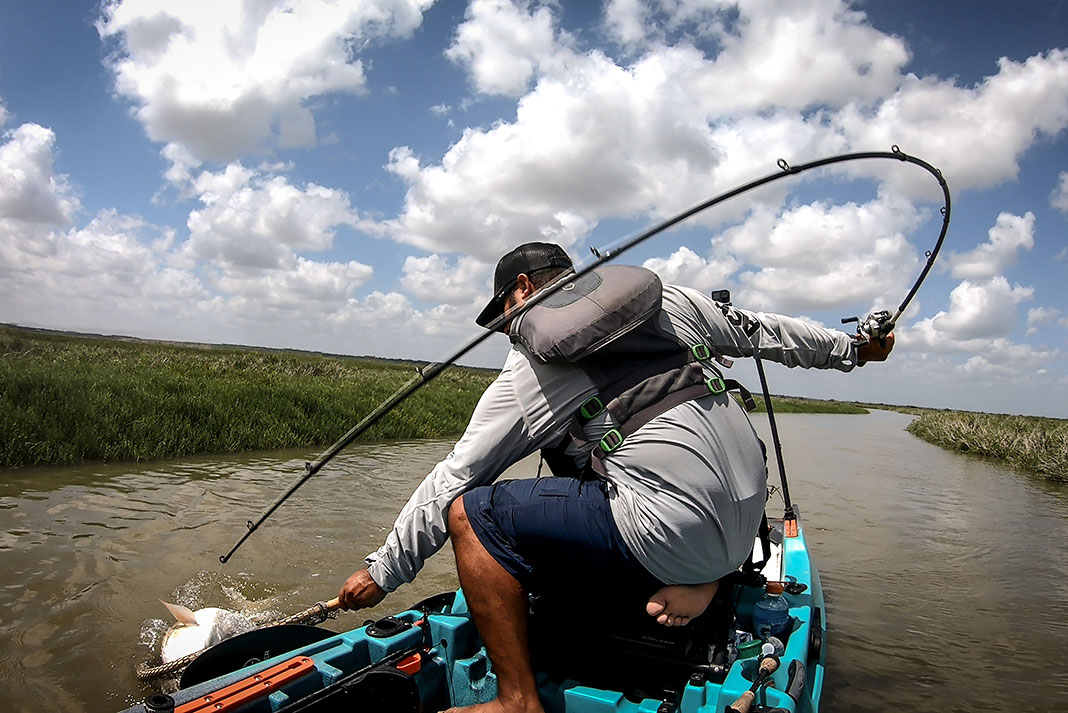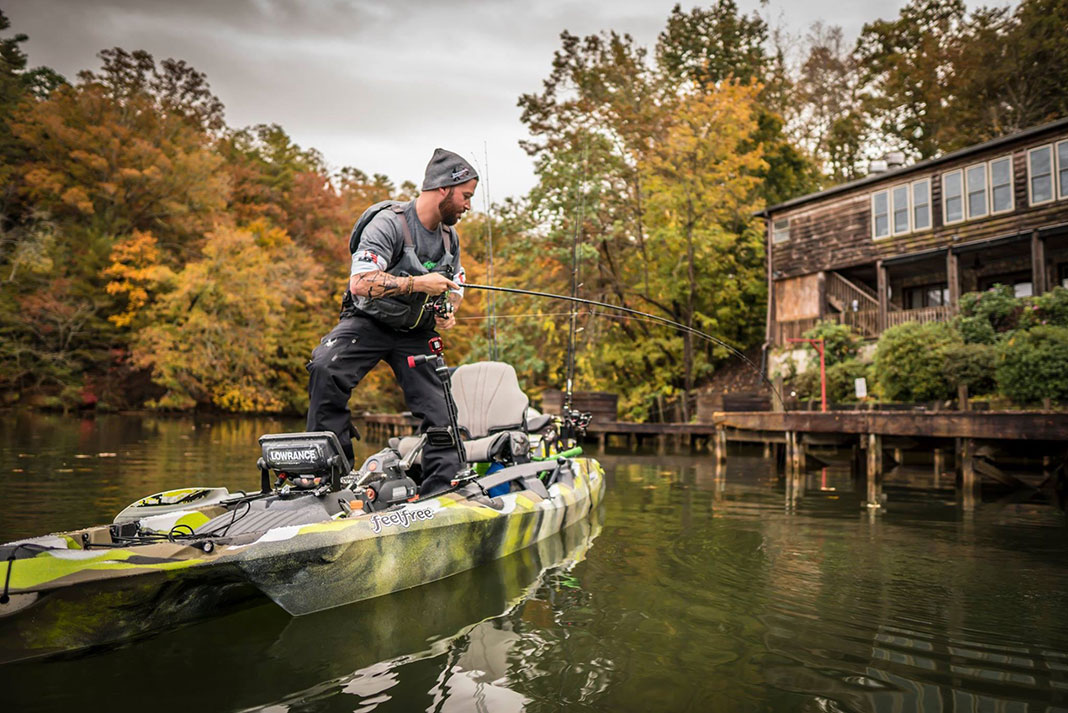Products You May Like
Look in any old-timer’s garage and you’ll see rows of fishing rod combos in every size and shape. But getting started in the sport only requires a few rods to cover the bases. While manufacturers make fishing rods for every type of tactic, they also make great all-around rods for a wide range of fishing types and perfect for those fresh to the sport.
Whether you enjoy freshwater or saltwater fishing, we rounded up three of our favorite do-it-all combos new anglers will love. From light tackle finesse fishing to heavy-duty offshore trolling, these top picks will tackle almost anything that swims. The key is to match the rod to the tactic and the size of the target fish.
How to Choose the Best Fishing Rod
Target: Small Fish
Most anglers spend their time fishing for smaller fish in shallow water. In saltwater, anglers often cast light lures to snook, speckled trout, striped bass and bay bass, or fishing bait for porgy, croaker or corbina. In freshwater, anglers are often targeting panfish, trout and bass.
This type of fishing requires sensitivity and casting power in a lightweight and comfortable rod with a reliable and smooth reel. Whether you’re fishing lures or baits, you’ll want to hold the rod to feel the lightest bite.

Deciding on a spinning or casting model is part personal preference and part tactical approach. A spinning rod makes longer casts and is more sensitive, while a baitcaster is more accurate and faster to cast.
For light tackle, a great rod is seven feet long with a light-fast to medium-fast action with a line rating of eight to 12 pounds and lure rated from 1/4 to 3/4 ounces. A rod rated fast bends at the tip but stays stiff through the rest of the rod. This provides longer, more accurate casts and a more sensitive feel.
Match the rod to a 2500-size spinning reel or 150 baitcasting reel capable of holding 150 yards of 10-pound monofilament or 30-pound braided line. Monofilament is less expensive and easier to untangle while braided line is more sensitive and more abrasion resistant.
Target: Medium-sized Fish
To handle bigger saltwater species, such as striped bass, full-size red drum, yellowtail and even tarpon, as well as larger freshwater species, including big catfish, muskie and large pike, look for a similar spinning or baitcasting combo one size larger than the light rod. A seven-foot, medium-heavy to heavy rod with a medium or medium-fast action will cast a 1/2 to 2-ounce jig or work a similar weight bait rig.
A seven-foot rod is a good balance between casting distance and accuracy. A shorter rod offers more accuracy, and a longer rod makes a longer cast.
Pair the medium-heavy action rod with a 5000-size spinner or 300 baitcasting reel spooled with 30- to 50-pound braided line or 15- to 30-pound monofilament. Braided line has a smaller diameter than similar strength mono, so it casts farther and sinks faster. Monofilament stretches to absorb the shock of fighting a big fish.
Target: Monsters
For massive fish, including river monsters like sturgeon, giant catfish and gar, choose a 20- to 30-pound conventional set-up or 8000 or larger series spinning package. Match this reel to a six-foot-six-inch heavy-action rod that is more powerful for big lures and big fish.
To stop the biggest fish, it takes 30- to 80-pound braid or 20- to 50-pound mono. Braided line is best for high-speed jigging and deep-water bottom fishing. Use monofilament for trolling lures or baits to keep lines from tangling and absorbing the shock of a big strike.

To troll lures or live baits for pelagics or drop heavy rigs to the bottom for denizens of the deep, a heavy rod should have a slow action to pump a big fish to the boat. Look for a large, comfortable grip, reinforced rod guides and reel seat to withstand the incredible power of a big fish fighting for its life.
This article was first published in Issue 66 of Paddling Magazine. Subscribe to Paddling Magazine’s print and digital editions, or browse the archives.
Just three set-ups can cover the bases and get the job done wherever you fish. | Feature photo: Roland Jimenez
